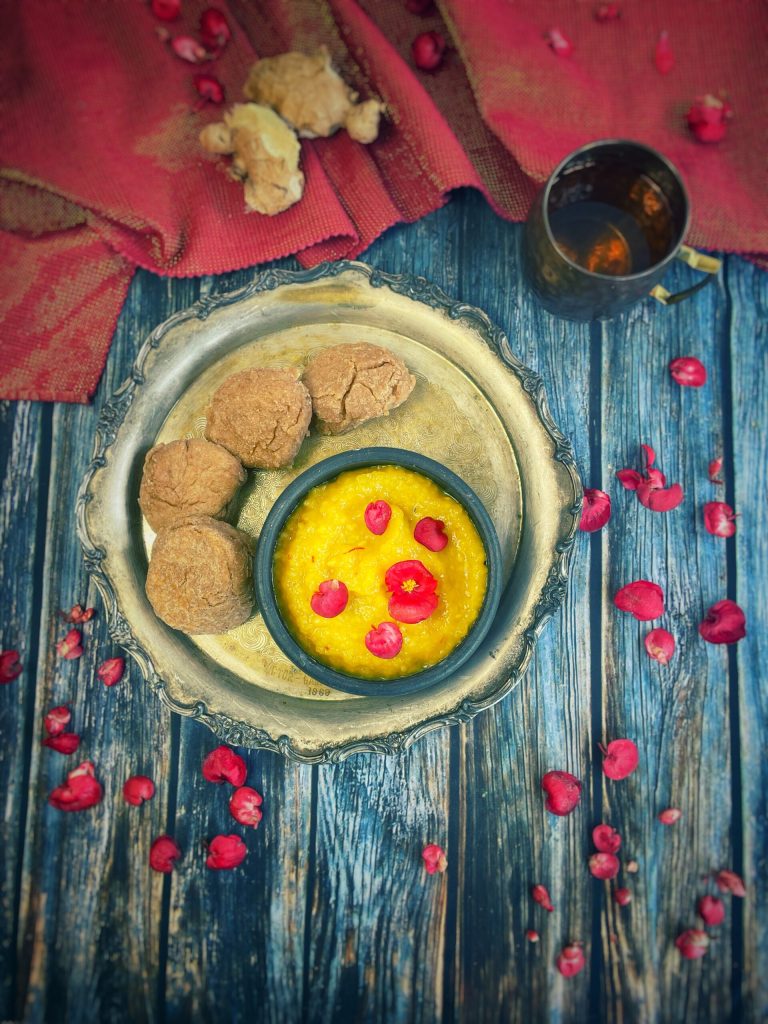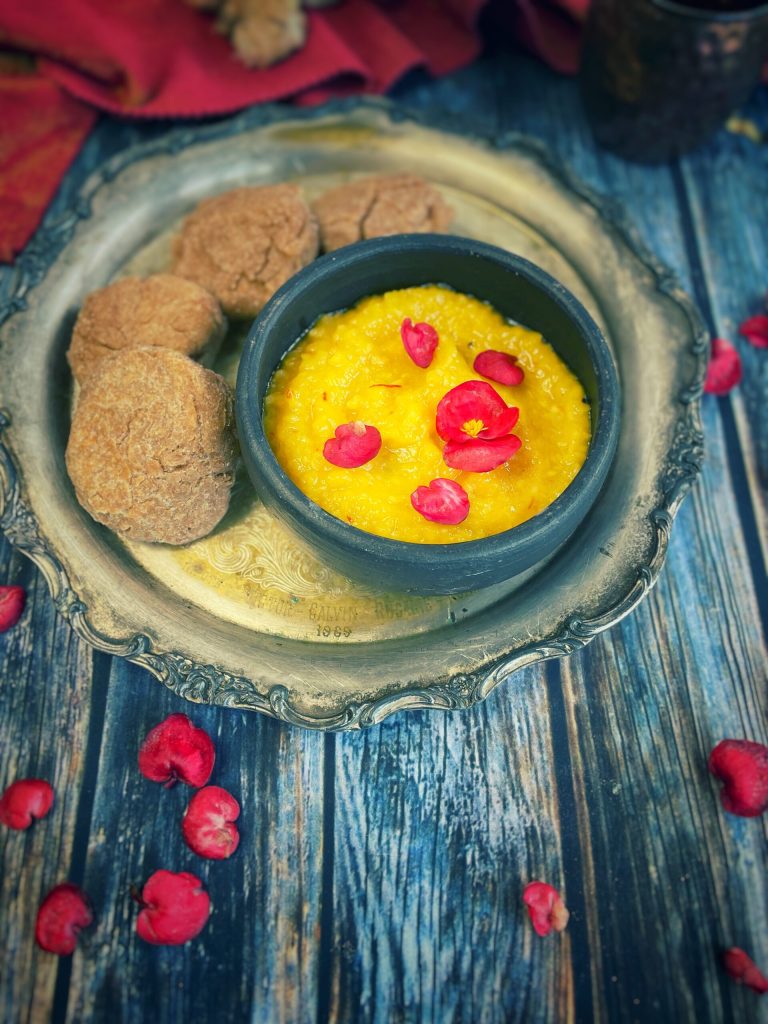The Keri no Ras, also known as Aamras*, is a traditional dessert from Gujarati cuisine, made with ripe mango pulp passed through a muslin cloth.
▶It’s an iconic dish of the Indian summer, often served with puri (fried bread) and other side dishes during festive meals.
For the Floral Menu the recipe is the Gujarat version that includes dry ginger powder (soonth), saffron and a touch of ghee, and is enriched with begonia, an edible flower.
➡In India, Begonia🌸 semperflorens is commonly known as wax begonia and widely cultivated in various regions of India, thanks to its adaptability to different climates.
↗↗I accompanied the Keri No Ras with puri (Indian fried bread made from whole wheat flour (atta)) whose recipe you can already find on the blog:

- Difficulty: Very easy
- Cost: Economical
- Preparation time: 5 Minutes
- Portions: 4People
- Cooking methods: No cooking
- Cuisine: Indian
- Seasonality: Spring, Spring, Summer
Ingredients
- 4 ripe mangoes ((preferably Kesar or Alphonso variety))
- 1/2 teaspoon dry ginger powder (soonth)
- 1 teaspoon ghee (or clarified butter)
- 1 pinch saffron
- to taste sugar (according to your preferences, but not essential)
- to taste begonia flowers
Tools
- 1 Blender
Steps
Prepare the mangoes: Wash, peel, and cut the mango pulp, removing the pit.
Blend the pulp: Put the pulp in a blender and blend until smooth.
Add the flavors: Incorporate the sugar (if needed), the dry ginger powder, and the saffron. Mix well.
Serve: Pour the Keri no Ras into bowls, drizzle a little ghee on top, and serve fresh with begonia flowers.
* A sweet dish from the Gujarati and Maharashtra Indian cuisine.
Begonia, edible flower:
Begonia flowers are edible and can be used in cooking.
They are particularly suitable as a garnish for salads, cakes, and other dishes, adding a decorative touch and a slight tangy and crunchy flavor.
Here accompanied by saffron incense to remind one of the dessert ingredients.

FAQ (Questions and Answers)
What are other mango-based desserts in Maharashtra?
Various sweets made from processed mango pulp are very popular in the Maharashtra community.
Amba Barfi : the pulp is mixed with sugar and reduced to a thick paste by boiling. The reduced pulp is then mixed with khoa (solid milk) and chopped nuts.
The mixture is allowed to cool in large flat trays and cut into cubes before packaging.
Amba Poli: the pulp is mixed with sugar and sun-dried on flat steel plates. The dried pulp forms hard layers that are stacked on top of each other.
The stacks are then cut into large squares before packaging.
Ambebhat: the pulp is mixed with sugar and nuts, then cooked together with boiled white rice. Once the pulp has reduced and evenly coated the rice grains, the Ambebath is ready to be consumed.
Ambyacha Shira: the pulp is mixed with sugar and nuts, then cooked together with semolina in water or milk. Once cooked, the mixture appears as an amber-colored paste and is ready to be eaten.

